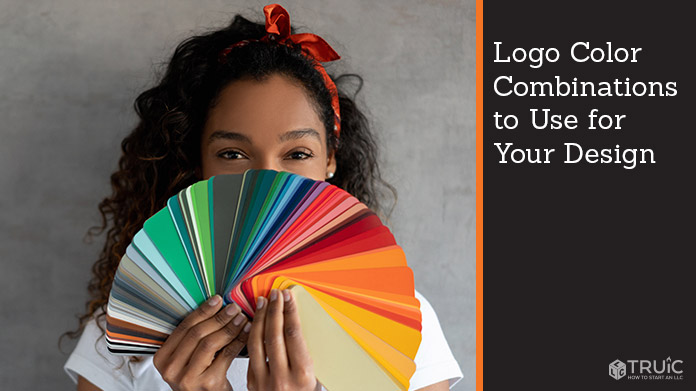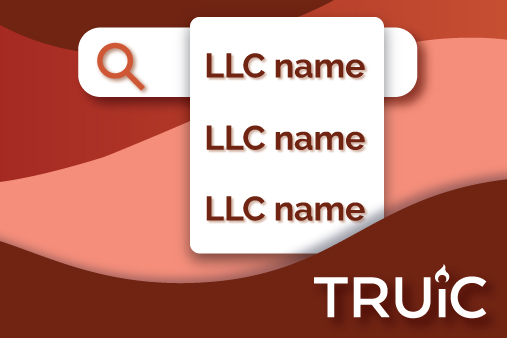Logo Color Combinations to Use for Your Design
We’ll look at one of the most basic questions that you likely have: how to pick the colors for your logo. Find out more about which colors make the most sense for your brand, how many colors you should have, and why there’s more nuance behind these questions than you might think.
If you do know which colors you want to incorporate, try experimenting with our Free Logo Generator

Getting Started With Color Combinations
The yellow, blue, and red of Burger King, the red, white, and blue of Pepsi, the many green and yellow shades of BP: brands use color combos in their logos to get across a message. Choosing the right ones can help you establish yourself as a legitimate business and potentially make it easier for people to remember you. The best part is that you don’t have to be a graphic artist to get it right.
What is Color Psychology?
Color psychology is how colors influence people’s choices and perceptions of your brand. There’s a lot to know about the theories behind color, much more than you could absorb in a single article. But there is plenty of evidence to suggest that people make snap judgments based on the color of a logo. It’s not as easy as choosing the right colors and becoming an instant billionaire, but you should consider how colors influence the viewer’s mood.
We’ll look at the general emotions associated with each color:
- Yellow: Happy, optimistic
- Green: Hope, peace
- Grey: Balance, harmony
- Black: Luxury, strength
- Blue: Trustworthiness, reliability
- Purple: Creativity, inclusiveness
- Red: Excitement, passion
- Orange: Cheerful, friendly
- Brown/Tan: Dependable, relatable
While basic color psychology is important to learn, choosing a color to express your brand is more complicated than basic emotions. It is good to also consider your demographic, the group of people you want to sell/reach the most, because each person’s reaction to color is tied into a person’s culture, gender, or life experiences.
Where someone comes from can drastically affect their perception of your brand based on the color you use. Red can mean power in one culture and caution or death in another. Gender also can play a big role, in general, women prefer softer colors whereas men would be more likely to want the bolder choices. Knowing your audience and demographic of people is important when thinking about the colors you choose for your brand.
How to Choose Colors for my Logo
Choosing colors for your logo starts with identifying how you want your audience to feel when they look at it. When it comes to how you employ color in your marketing, you can’t necessarily make the same assumptions as to how each shade will relate to the viewer or what the overall effect will actually be.
To put the issue another way: Can you really subconsciously convince someone to buy your product or try your service just because you used a darker shade of green?
We’ve reviewed the top 5 best logo makers of 2021 so you can know which tool will help you create a logo and choose the best colors for your brand.
How Many Colors do Experts Recommend for a Logo?
Marketing experts typically recommend 2 colors. However, there is no perfect formula. Successful companies may use just one, while others use three or more. If you’re going to combine colors, you’ll need to first look at a standard color wheel. The warm colors are on the left (reds, oranges, etc.), while the cool colors (blues, greens, etc.) are on the right.
Color combos might be analogous, meaning they’re similar to each other. For example, using a pale red against a medium-colored red. Or they might be complementary, meaning they’re opposite each other on a color wheel. For example, using orange and blue or yellow and purple.
If you choose a triadic color combination, you’re selecting three colors that are fairly spaced out on the wheel. For example, selecting purple, green, and orange. If you’re going to go with three or more, it might make sense to choose at least some analogous shades. For example, three shades of pink set against a dark red background. You essentially want one shade to dominate the other, but for the supporting color to add depth.
Famous Colors and Combos
There is such a thing as a one-color logo (think: McDonald’s Golden Arches). Often this is a way of reducing the logo in certain marketing. For example, Coke might use their famous red color to represent the letters if they can’t feature the name in white script set against a red background. So maybe you keep your marketing materials white, and you design your business name in cursive in purple as a logo.
However, most owners will think in terms of at least two colors. When it comes to pairing different colors up, you might be asking whether it makes more sense to have a pattern with the same colors or ones that contrast. In other words, should you have your name in light blue against a dark blue background or your name in green against a purple background? Again, the science for this is not exactly precise.
The best advice is to look for something that fits in with the rest of your brand. If you’re an artsy brand, you might pick a logo that features every color of the brand. If you’re offering something more straightforward, then you might want a two-color combo. Most experts recommend starting with the basics first. If you’re still fiddling with the right name for your company, check out our Business Name Generator.
Do my Colors Match What I’m Selling?
You first need to determine what exactly lies behind your sales. What a person decides to purchase has a lot to do with how that brand is perceived. Whether it’s a social cause, widget, or cleaning service, you have to ask how your color combinations relate to what you have to offer.
The good news is that strong brand perception can be enough to overcome personal negative reactions to colors. So instead of asking yourself whether black is associated with power and luxury, ask if you want to come across that way.
You’re strongly encouraged to pick one color for your most dominant trait. So if you’ve started a cleaning service, you might want your brand values to be reliability, authenticity, and friendliness. But which one is most important to you? Would you rather let potential clients know that the cleaners will be on time or that they’ll be courteous when they’re interacting with customers? Chances are, you would want to choose an Earthy tone like brown or tan to connote that people can count on your business to live up to its standards.
Final Color Tips
There is no need to conform to stereotypes. In fact, you may be better off challenging the norms to ensure that you stand out. As a new brand, you should avoid choosing a color that could be confused with another brand. You’re looking to leave people with an impression.
You also don’t necessarily want to overthink your logo. The truth is that some people will just have their own perceptions and that’s perfectly acceptable. Where some might see a deep red and think of romance or love, others might see it and think of blood or war. You can’t control everything, you can only single out what your brand stands for and then go from there.
No matter where you are in your enterprise, we’re here to help you at every stage of the way. We can show you how to Form an LLC, How to Trademark Your Brand, and How to Register Your Business Name. Whether you’re ready to make your logo or haven’t even written your mission statement yet, you’ll find the advice you need on our helpful pages.

